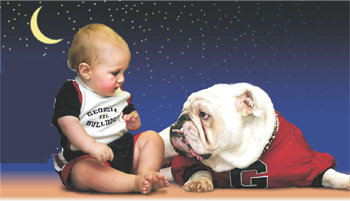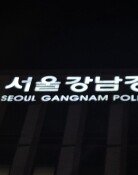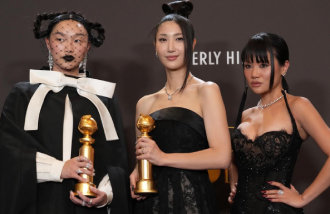Children in Sleep Disorder: Victims of Sleep Terror
Children in Sleep Disorder: Victims of Sleep Terror
Posted February. 20, 2005 23:00,

What Is Sleep Terror?-
For infants and toddlers, it is very natural for them to wake up in the middle of the night. Babies, who are under 12 months old, usually wake up two times during the night. And young children at ages between two and five experience the same symptoms five or six days a week; on a troubling night, they wake up one or two times. When toddlers become over five years old, 20 percent of them wake up once a day during sleep. However, parents usually dont recognize the last pattern since young children go back to sleep within a short time.
Meanwhile, some of the young children start crying in a terror. The speed of their breath increases and some of them show cold perspiration. On average, one to three percent of young children under the age of eight experience these symptoms. Among children visiting child neuropsychiatry clinics, one percent shows the above symptoms.
In modern medical terms, these symptoms are called night terrors. This generally occurs to the children between the ages of one and eight, who dont start going school yet. And, this symptom occurs most after two hours after young children fall asleep.
Are Night Terrors a Disease?-
In most of the cases, night terrors have nothing to do with disease. The symptom might be a good indicator that your infants are growing in a healthy condition. The young children between age one and eight experience the development of linguistic competence and thinking power that are accompanied by increasing imagination. This is why they sometimes mumble non-sensible utterances. They experience diverse dreams at night, too. Some people interpret night terrors with nightmares; young children cry in the terror after having nightmares.
However, sleep terrors also can be related to their increased stresses. Since some cases show that children experience a sleep terror right after they start attending prep-school and kindergarten, or when they got scolded by mom or a teacher.
Also, it can be caused by the lack of moisture inside the house or the blockage of their nostrils. Parents should check the humidity and temperature of the room in which young children sleep.
Saying, My infant is not healthy enough, but weak, some parents give restoratives to their young children. According to western medicine, however, this is not considered an efficacious countermeasure.
What Should Be Done?-
If the child does not show any abnormal symptoms during the day and does everything okay, it is better for parents to wait and see the progress. But if the child shows night terrors every night and the symptoms prolong over three weeks, he or she should be examined in a child neuropsychiatry clinic. Depending on the causes, doctors use medicines or psychotherapy.
Parents get perplexed when their young children cry hard, showing intense terrors. Although parents coddle them, they dont easily stop crying. Rather they sometimes utter, Mom, you are scary; Dad scolded me; and My teacher tries to hit me, with a terrorized facial expression.
In this case, it rarely helps giving them a lesson saying, Why are you crying? or Have I scared you ever? Parents rather should wait until they stop crying. This happens since young children are unable to discern dreams and reality. Moms should not feel guilty, thinking, Am I doing something wrong to my child? After a full awakening from sleep, the children dont remember their utterances. To prevent any accidents, it is better to put away objects that can cause dangerous situations. Some young children abruptly wake up, wander around, and fall asleep.
Asian Medicine Says -
In the field of Asian medicine, infants wake up and cry in the middle of night when their vigor (Gi) becomes imbalanced. They are also called night terrors. And the symptoms of night terrors tally with those of sleep terrors in modern western medicine.
Nevertheless, Asian medicine and western medicine do not share causes of sleep terrors. If the symptoms occur before the infant become six months old, Asian medicine blames excessive heat for the sleep terrors. Especially, it finds the main culprit to be the excessive heat near the heart. In this case, the babys face turns red, and parents even can feel the heat coming out of the babys mouth. Their stomach also gets warm, and the baby perspires. When these symptoms occur, the first thing to do is fix the excessive heat. Asian medicine clinics prescribe medicines that help cool down the heat in the heart and sedate young nerves.
For infants between six months old to two years old, the main cause of sleep terrors is considered to be a weakened metabolism. Especially, those infants go through a weakened spleen. When young children have an enfeebled spleen, they have pale faces and their hands and feet become colder than the normal. The amount of food intake also decreases. Their excrement becomes watery and greenish, and they tend to crouch when they cry. Asian medicine doctors prescribe medicines that make the spleen and stomach warm.
When the toddlers over two years old experience night terrors, fear and stresses are the main causes, according to the oriental medicine. The symptoms are almost identical with their counterparts of modern western medicine. From this period on, they cry hard in terror suddenly, rather than whining. Their complexion changes from red to blue. They sometimes glare at something hard or have a slight spasm in the hands and feet. Oriental doctors prescribe medicines that sedate nerves and ease the concerted vigor around the liver.
It is also advised not to scold young children when they are suffering from sleep terror in oriental medicine. Make sure whether the clothes of the infant are too tight, whether the humidity and temperature are proper, and whether the light is too bright.
(References: Professor Song Dong-ho at the Child Neuropsychiatry department of Yongdong Severance Hospital, Professor Lee Eui-joo at the Constitutions department of Kangnam Korean Hospital, KyungHee Hospital, and Kim Jae-doo, President of the Goryeodang Oriental Clinic.)
Sang-Hoon Kim corekim@donga.com







